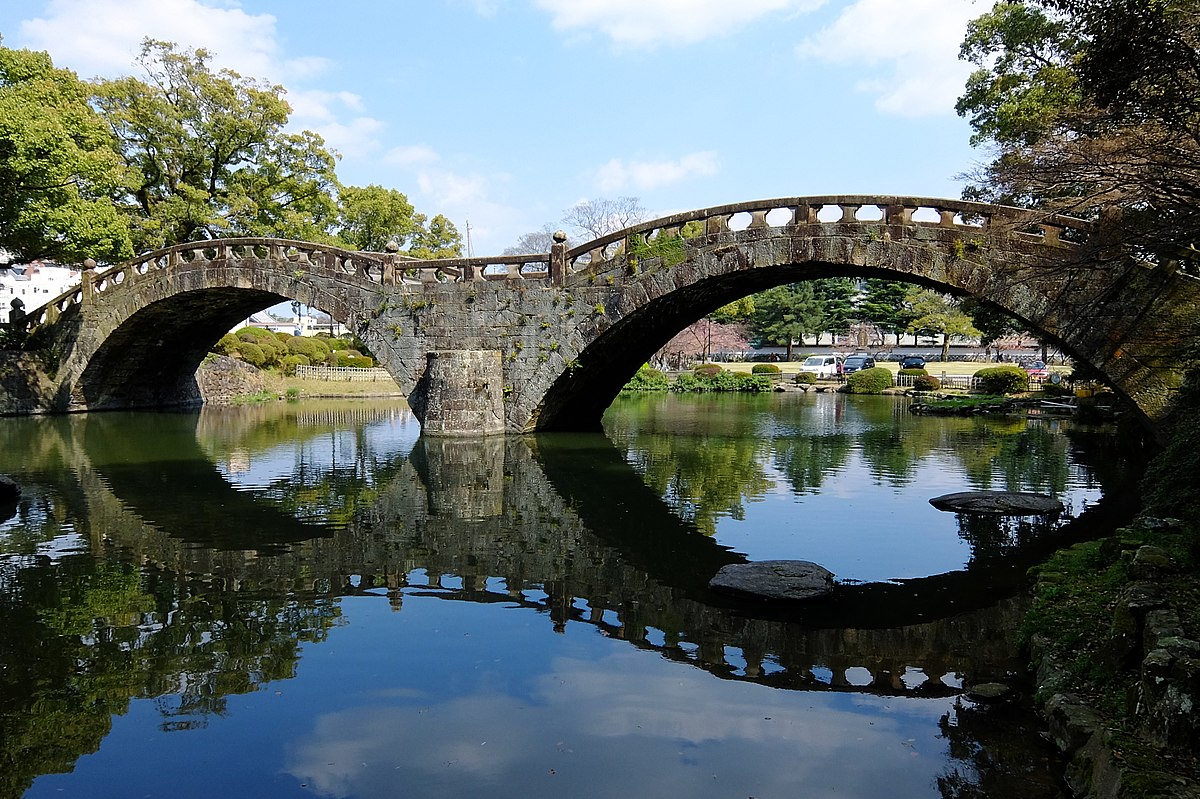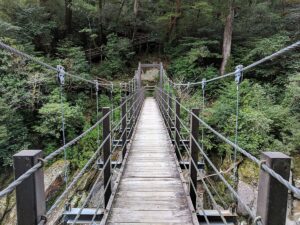TOC
Overview (history, characteristics, attractions)
Meganebashi Bridge is a stone arch bridge spanning the Nakajima River that flows through Nagasaki City, and was named after the fact that the arch of the bridge and its reflection in the water look like glasses. Built in the Edo period, it is one of the oldest stone bridges in Japan and a landmark that represents the historical landscape of Nagasaki. Utilizing stonemasonry techniques imported from China, it is characterized by its simple, stable, and beautiful arch line. It is lit up at night, making it a popular photo spot both day and night.
Highlights
- Reflection of the water in the shape of "glasses": On clear days or when the water is calm, the arch and its reflection look like glasses. This is a popular photo spot.
- The detailed stonework: You can see up close how the stones are laid and the beautiful curves of the arches. The texture of the stones and the joints give a sense of the craftsmanship.
- Illumination: At night, the bridge is illuminated and the combination with the reflections creates a fantastical effect. Recommended for night photography.
- Harmony with the surrounding scenery: The scenery created by the willows and cherry blossoms along the river, seasonal plants and bridge has a different charm in each season.
- Riverside Walking Path: The area around the bridge is a great place for a stroll, where you can take leisurely photos and take a break.
Access (nearest station, transportation, etc.)
- Nearest public transportation: The nearest tram stop is "Meganebashi" on the Nagasaki Electric Tramway. It is a short walk from the stop.
- From JR Nagasaki Station: Approximately 15 minutes by tram (depending on transfers and time of day), or approximately 10 minutes by taxi.
- Visiting by car: There are paid parking lots in the area, but they tend to fill up during the tourist season, so we recommend using public transportation.
- Walking: It is within walking distance from central Nagasaki (Shianbashi, Shinchi Chinatown, and Dejima), so it's fun to stroll there.
Estimated stay (estimated time required)
- Short tour: 15 to 30 minutes (photography and walking around the bridge)
- A leisurely stroll: 1-2 hours (including a stroll along the river and visiting nearby tourist spots)
Nearby spots
- Shinchi Chinatown: An area with many Chinese restaurants and shops. Convenient for eating and walking around.
- Confucius Temple (near the China Museum of History): Enjoy facilities and gardens related to Chinese culture.
- Dejima (towards Dejima Wharf): A historic site that tells the history of trade during the Edo period, accessible on foot or by tram.
- Glover Garden and Oura Cathedral: Although they are a little far apart, they are popular sightseeing spots in Nagasaki and can be visited together.
- Riverside cafes and souvenir shops: There are shops scattered around the bridge that you can stop by during your stroll.
Things to be aware of (crowds, manners, seasonal precautions, etc.)
- Busy periods: Golden Week, summer vacation, autumn foliage and cherry blossom season, and weekends are busy with tourists. Please be considerate of others when taking photos.
- Weather and footing: In rainy weather and along rivers, the ground can be slippery. Please be especially careful with your shoes on stone steps and embankments.
- Entrance etiquette: Driving on or around the bridge, or climbing on the stone bridge, is dangerous and causes a nuisance. Please observe from the designated footpaths.
- Nighttime safety: The area is lit up at night, but please be careful to keep an eye on your bags and other belongings in the dark and when there are few people around.
- Natural disasters: Heavy rain and typhoons may cause flooding and road closures. Please follow local information and instructions from local authorities.
Meganebashi Bridge is a tourist attraction that you can easily drop by while strolling around Nagasaki city. Enjoy the beauty of the historic stone arch day or night and in any season.



